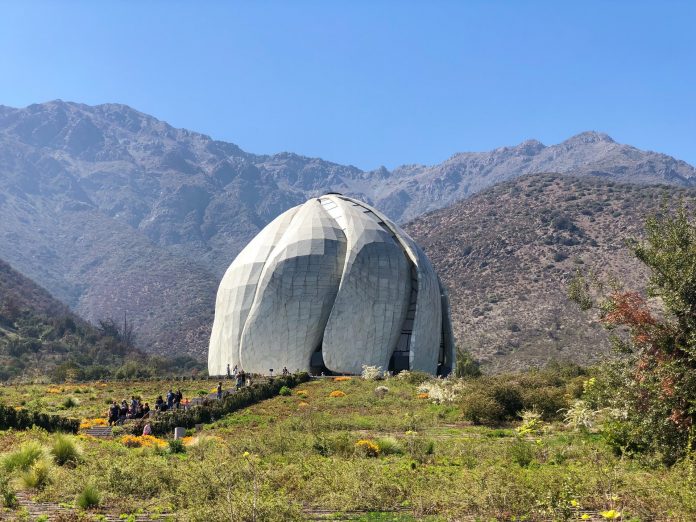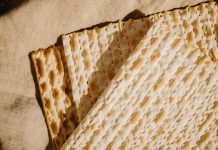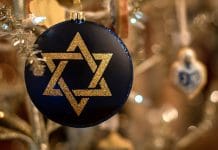
A brief nineteen days of austerity in a year filled with festive holy day celebrations, the Baha’i fast is assigned a spiritual significance that can be puzzling to those from religious traditions, cultures and societies in which fasting is not widely practiced.
Every hour of the nineteen days of this sunrise-to-sunset fast, the Baha’i scriptures tell us, is endowed with “a special virtue, inscrutable to all except [God].” Even the act of rising at dawn to pray, Baha’u’llah explains in a prayer revealed specifically for the Baha’i fast, is a unique privilege: “For Thine ardent lovers, Thou hast, according to Thy decree, reserved, at each daybreak, the cup of Thy remembrance.”
Yet in a country like China, for example, where Chi fan le ma? (Have you eaten?) is a common greeting, fasting may be viewed by some as detrimental to health. Closer to home, here in America, spiritually-motivated fasting is considered by many to be an outmoded practice. How, then, to convey the value of fasting, not only to those who question it, but to children who are being raised to practice it?
The Baha’i year is characterized by a pattern of joyous activity and quiet reflection marked by celebrations that commemorate God’s intervention in human history and times of meditation on its significance—a rhythm of fasting and feasting. And when children learn to keep step to this divine rhythm, they soon experience the joy of the dance.
In the Baha’i religion, fasting is not binding until the age of maturity, 15.* But the importance of the fast in the scheme of the Baha’i calendar is quickly grasped by even the smallest child. When I asked my 13-year-old daughter what the fast had meant to her over the years, she answered, “The fast is a time of letting down after Ayyam-i-Ha and building up to Naw Ruz!”
A “season of restraint,” as Baha’u’llah describes it, the fast is framed by a festive season of gift- giving, Ayyam-i-Ha, and by the celebration of the Baha’i New Year, Naw Ruz. And when Baha’u’llah thanks God for ordaining Naw Ruz as “a festival unto those who have observed the fast for love of Thee and abstained from all that is abhorrent unto Thee,” I believe he is drawing our attention to this divine rhythm of fasting and feasting.
The period of fasting not only invigorates the Baha’i calendar with a salutary change of pace, it also brings a welcome shift in daily routine in the form of dawn prayers, family dinners at dusk, and prayer meetings or private meditations where once there were lunch dates and coffee breaks.
The Baha’i fast allows those who observe it to enter into sacred time but also into sacred “space” in the form of a new mind set. As Abdu’l-Baha, Baha’u’llah’s eldest son and appointed successor, explains, the “material fast” (of the body) is merely an “outer token of the spiritual fast.” The significance of the Baha’i fast as a “token” and “symbol” is important to remember. The essence of the Baha’i fast is not abstention from food and drink. The fast is, rather, “a symbol of self-restraint, the withholding of oneself from all appetites of the self, taking on the characteristics of the spirit, being carried away by the breathings of heaven and catching fire from the love of God.”
The purpose of the Baha’i fast is to give those who observe it a period of time to detach themselves from the things of this world and to make the remembrance of God the focus of their days. The fast is intended to spark spiritual renewal, to awaken and invigorate our sleeping souls before spring arrives and the new year begins.
Viewed in this way, the Baha’i fast becomes a door to a greater understanding of the spiritual significance of the events of Baha’i history, central to which is the life experience of Baha’u’llah, whose response to his long confinement in what he called “the Most Great Prison” showed us the path to true liberation—the transcendence of suffering through remembrance of God and attention to the life of the soul.
What has this divine rhythm of fasting and feasting meant to me and my family over the years? I remember visiting my parents during one of my first fasts. I was teaching on the west coast at the time, and I had flown back home to Toronto for a conference. My father had always been an early riser, but I had not known how useful this habit might be in helping me observe the fast.
I still remember the quiet magic of those early morning hours when I awakened to the sound of my father’s call and shared breakfast with him in the kitchen. And one weekend morning, after my conference was over, he even drove me to dawn prayers in a distant part of the city. Under what other circumstances would I have had the opportunity to enjoy with my father the stark beauty of a winter sunrise over the ice-blue waters of Lake Ontario?
Now it is my husband and I who rise together during the last days of our long Maine winter to share breakfast and dawn prayers. And in the company of our daughter, we break the fast at sunset with prayers and a more elaborate meal than usual. Towards the final hours of the fast, we can usually be found in the kitchen experimenting with new recipes that in the flurry of our usual schedule we do not have time to try.
The Baha’i fast—a time when time abounds. It is surprising how much time opens up when you do not have to prepare and eat three meals a day. All of a sudden there is time for walking in the fresh, almost-spring air, for organizing the house, for deep cleaning, for trying new recipes and, of course, for prayer.
A time of renewed intimacy with God and others. A time of reflection, not action. A time of solitude and of communion. A time of quietude. A time of waking up before the world does. A time to collect one’s thoughts, to gather the first moments of the day and to make of them a sure foundation upon which to build a life. A time to eagerly anticipate the sunset. A time to exult in its magnificent colors.
Fasting and feasting—in the divine rhythm of activity that is the Baha’i year, there are many spiritual “seasons.” But it sometimes seems to me that the season of greatest intimacy with God is the “holy season” of the fast when all believers are permitted to enter into, symbolically speaking, “the Most Great Prison” in which Baha’u’llah suffered deprivation for so long, and to partake there of the bread that nurtured his life—the bread of self-abnegation and sacrifice, a bread leavened by the remembrance of God.
*In his book of laws, Baha’u’llah exempts from the fast those who are elderly (over 70), ill, pregnant, nursing, in their courses, traveling or engaged in heavy labor.



































youre in Ontario?? thats so cool… I used to live in Oakville and that lake was simply the first most Godly thing that I experienced when I moved to Canada
Beauty can be found it anything….I love to see the sun rise over the lake too! I found this article very uplifting….What about you?